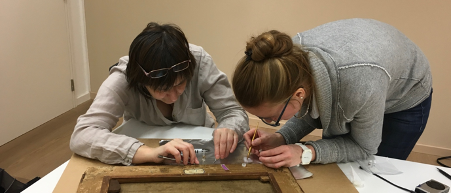Radiocarbon
Childpage navigation
Radiocarbon dating is the method of choice when age of carbon –bearing material, i.e., the time of their formation, has to be estimated. The method is based on the radioactive decay of the cosmogonic isotope of carbon (14C). Produced in the atmosphere by secondary cosmic rays (SCR), radiocarbon enters various reservoirs of carbon. The atmospheric carbon content is very low (14C/12C ~10-12) and variable due to the changes in production rate, changes in the global carbon cycle, and anthropogenic activities. Radiocarbon research focuses on developing preparation and measurement techniques and reconstructing the variability in the atmospheric 14C record (calibration curve). The broad spectrum of applications includes, for example, archaeology, climate and environmental studies and monitoring of pollution, forensics, dating of art items, and biomedical research.
